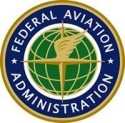Sat, Jul 03, 2010
New Rules Deal Primarily With Communications, Speed
 On July 1, the FAA announced a number of changes to the
restrictions governing the Special Flight Rules Area surrounding
Washington, DC, effective September 1.
On July 1, the FAA announced a number of changes to the
restrictions governing the Special Flight Rules Area surrounding
Washington, DC, effective September 1.
The most significant change will affect pilots who lose radio
contact with controllers while flying under visual flight rules
after departing from an airport located within the Special Flight
Rules Area (a circle of airspace extending 30 miles out from Ronald
Reagan Washington National Airport). Under the current rules, those
pilots must squawk 7600 on their transponders and immediately leave
the Special Flight Rules Area by the most direct route. The new
rule will allow pilots to return to their departure airport if it
is closer than the Special Flight Rules Area boundary. This means
pilots might not have to fly longer distances to airports outside
the Special Flight Rules Area. Pilots who lose radio contact after
departing from an airport located within the Flight Restricted Zone
(an inner ring extending 15 miles out from National Airport) may
return to that airport if it is within five nautical miles. If
neither condition applies, pilots must leave the Special Flight
Rules Area by the most direct route.
To improve safety, the FAA added a speed limit of 180 knots
within the Special Flight Rules Area for aircraft flying under
visual flight rules. This will complement the existing 230 knot
speed limit for aircraft flying under visual flight rules in
airspace extending 30 miles beyond the outer ring of the Special
Flight Rules Area.
The agency made several clarifications to make it easier for
pilots to file flight plans and understand radio requirements. The
FAA added a phone number (866-225-7410) for pilots to call to file
flight plans for the Flight Restricted Zone. Pilots will be asked
to use their confidential pilot identification codes or their
waiver numbers.
The FAA also clarified that aircraft flying within the Special
Flight Rules Area must be equipped with a functioning two-way radio
capable of communicating with controllers on the appropriate
frequencies or UNICOM. The agency strongly recommends that pilots
continuously monitor VHF frequency 121.5 or UHF frequency 243.0 for
emergency instructions while flying in the Special Flight Rules
Area.
More News
We're Everywhere... Thanks To You! Even with the vast resources and incredibly far-reaching scope of the Aero-News Network, every now and then a story that should be reported on sl>[...]
“The Coast Guard anticipates new aircraft procurements may be based off Sikorsky’s MH-60R aircraft, which is the maritime variant of the H-60 in active production. Diff>[...]
Aero Linx: Classic Jet Aircraft Association (CJAA) The CJAA Formation and Safety Team (FAST) Mission is to be the sole authorized provider of formation training and certification f>[...]
During A Low Pass Over A Gravel Bar, The Airplane’S Tailwheel Impacted An Area Of Rough, Uneven Terrain Analysis: The pilot reported that he was flying low-level over various>[...]
Hold For Release Used by ATC to delay an aircraft for traffic management reasons; i.e., weather, traffic volume, etc. Hold for release instructions (including departure delay infor>[...]
 ANN FAQ: How Do I Become A News Spy?
ANN FAQ: How Do I Become A News Spy? Aero-News: Quote of the Day (10.28.25)
Aero-News: Quote of the Day (10.28.25) ANN's Daily Aero-Linx (10.28.25)
ANN's Daily Aero-Linx (10.28.25) NTSB Final Report: Aviat Aircraft Inc A-1B
NTSB Final Report: Aviat Aircraft Inc A-1B ANN's Daily Aero-Term (10.28.25): Hold For Release
ANN's Daily Aero-Term (10.28.25): Hold For Release



